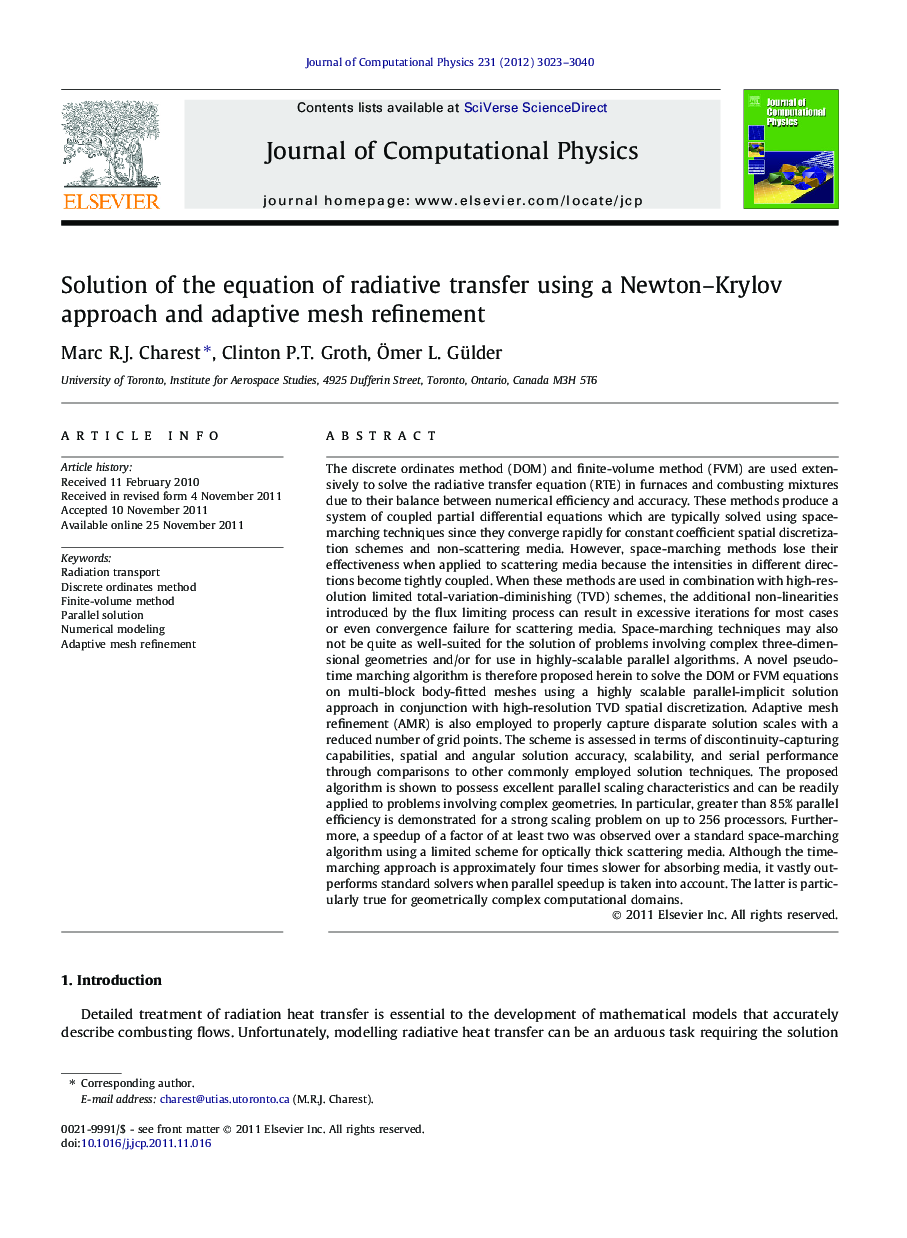| کد مقاله | کد نشریه | سال انتشار | مقاله انگلیسی | نسخه تمام متن |
|---|---|---|---|---|
| 519041 | 867637 | 2012 | 18 صفحه PDF | دانلود رایگان |

The discrete ordinates method (DOM) and finite-volume method (FVM) are used extensively to solve the radiative transfer equation (RTE) in furnaces and combusting mixtures due to their balance between numerical efficiency and accuracy. These methods produce a system of coupled partial differential equations which are typically solved using space-marching techniques since they converge rapidly for constant coefficient spatial discretization schemes and non-scattering media. However, space-marching methods lose their effectiveness when applied to scattering media because the intensities in different directions become tightly coupled. When these methods are used in combination with high-resolution limited total-variation-diminishing (TVD) schemes, the additional non-linearities introduced by the flux limiting process can result in excessive iterations for most cases or even convergence failure for scattering media. Space-marching techniques may also not be quite as well-suited for the solution of problems involving complex three-dimensional geometries and/or for use in highly-scalable parallel algorithms. A novel pseudo-time marching algorithm is therefore proposed herein to solve the DOM or FVM equations on multi-block body-fitted meshes using a highly scalable parallel-implicit solution approach in conjunction with high-resolution TVD spatial discretization. Adaptive mesh refinement (AMR) is also employed to properly capture disparate solution scales with a reduced number of grid points. The scheme is assessed in terms of discontinuity-capturing capabilities, spatial and angular solution accuracy, scalability, and serial performance through comparisons to other commonly employed solution techniques. The proposed algorithm is shown to possess excellent parallel scaling characteristics and can be readily applied to problems involving complex geometries. In particular, greater than 85% parallel efficiency is demonstrated for a strong scaling problem on up to 256 processors. Furthermore, a speedup of a factor of at least two was observed over a standard space-marching algorithm using a limited scheme for optically thick scattering media. Although the time-marching approach is approximately four times slower for absorbing media, it vastly outperforms standard solvers when parallel speedup is taken into account. The latter is particularly true for geometrically complex computational domains.
Journal: Journal of Computational Physics - Volume 231, Issue 8, 20 April 2012, Pages 3023–3040